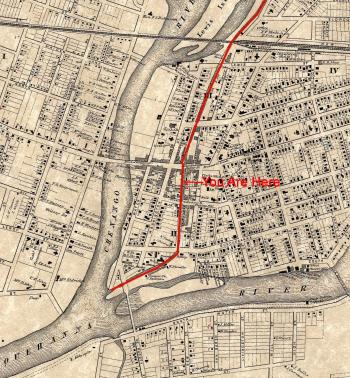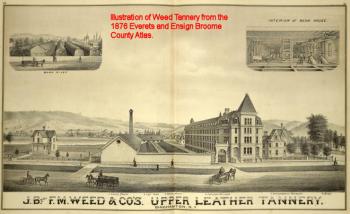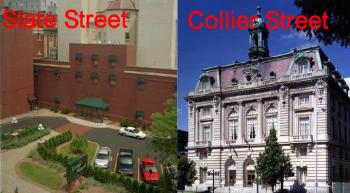
State Street through the City of Binghamton generally follows the route of the Chenango Canal, which operated in Binghamton from 1837 to 1874. The Chenango Canal was an important development in the history of Binghamton. As a settlement on the canal, Binghamton became a regional processing center for raw materials that shipped via the canal, including lumber. The canal drew not only businesses but people to Binghamton, including many Irish immigrants who worked on the canal and in new industries.

In 2009, test excavations by the Public Archaeology Facility identified a wooden floor and stone loading ramp from the green hide storage building of the Weed tannery. The Weed tannery was located to the west of the current State Street bridge directly adjacent to the Chenango Canal and was one of many 19th century businesses that benefitted from the lower transportation costs provided by the canal. A section of the canal or a boat basin where repairs and dry docking occurred may also have been discovered during this excavations. Archaeologists found a large, deep void filled with tan bark or discarded remnants of the bark, usually hemlock bark, used to tan hides. Tan bark was used in many instances to fill in the canal bed after it had been abandoned. The section of State Street where you are standing may be filled with this bark.

Many of the buildings now lining State Street were built after the canal ceased operations. In the 1870s, the west side of this block included a relatively open yard area and a saloon while the Grand Royale Hotel building on the east side of the block was also not here. This building now has its main entrance on State Street but historically its front facade was on the next block on Collier Street. It was built in 1897 and served as City Hall until 1972. The building replaced the old Fireman’s Hall, which was built in the late 1850s and which also housed Binghamton’s municipal offices. The current building is a prime example of the late 19th century Beaux Arts style of architecture.